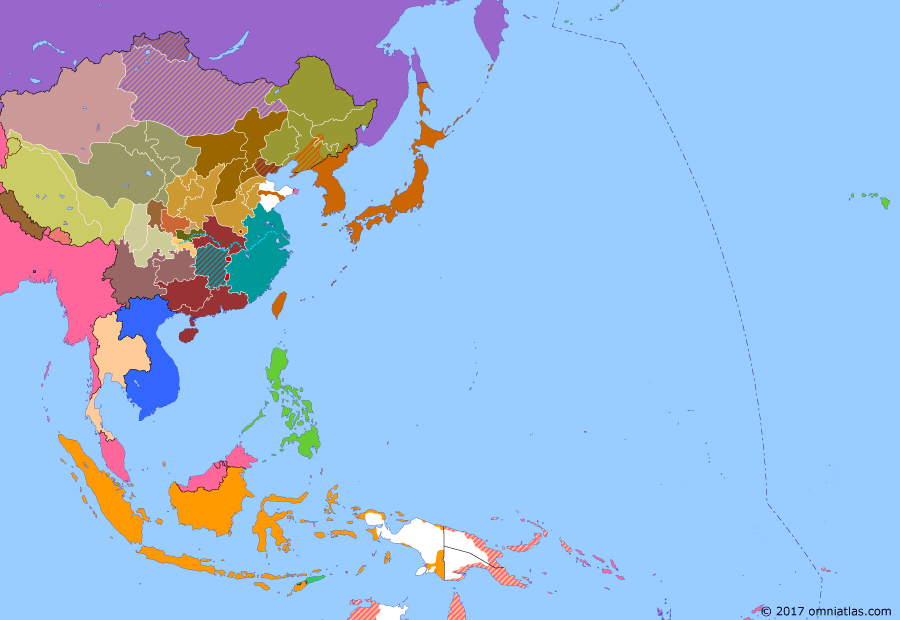Asia Pacific 1928: Northeast Flag Replacement
29 December 1928
29 Dec 1928
Northeast Flag Replacement
27 Mar 1927 Northern Expedition
14 Jul 1927 Birth of the Chinese Civil War
11 May 1928 Jinan Incident
29 Dec 1928 Northeast Flag Replacement
20 Nov 1929 Sino-Soviet Conflict
26 Jun 1930 Central Plains War
18 Sep 1931 Mukden Incident
18 Feb 1932 Creation of Manchukuo
31 May 1933 Tanggu Truce
22 Oct 1935 Long March
Japanese attempts to halt the Nationalist advance in China were thwarted when the warlord Yan Xishan unexpectedly seized Beijing on behalf of Chiang Kaishek's Nationalist government. The other warlords soon followed suit in recognizing the Nationalist regime in Nanjing, culminating in December with the Fengtian clique raising the Nationalist flag in the cities of the northeast. Once again China was united, albeit more as a coalition of warlords than a centralized state.
